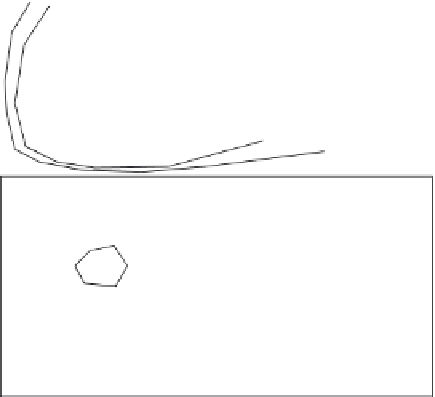Environmental Engineering Reference
In-Depth Information
The speed range concern with a post-transmission hybrid has to do with
operating deep into field weakening of the electric machine and not incurring
electrical and mechanical spin losses when the M/G is unenergized. If spin losses
become a major fuel economy issue, the post-transmission M/G would require an
additional clutch to remove it from the driveline during coasting periods.
Wide CPSR is more problematic. With a post-transmission M/G there is no
option - it must possess CPSRs greater than 6:1 and preferably 10:1 in order to
deliver both high torque at low speeds for tractive effort plus constant power at
higher speeds for optimum propulsion. Figure 2.32 illustrates the motor capability
curves required from a post-transmission hybrid. A high torque, in the vicinity of
300 Nm, is necessary to deliver low speed tractive effort and wide CPSR is necessary
to hold shaft power at high vehicle speeds. Efficiency contours are estimated for such
a post-transmission electric M/G to illustrate the placement of peak plateaus. An
even more advantageous efficiency contour map would have high efficiency islands
extending towards zero on the chart so that best operation would be available at low
demands regardless of speed as well as at higher demands.
The capability curve mapped in Figure 2.32 is also needed for in-wheel motors.
Such hub motors have no option for gear shifting and generally are direct drive
units.
2.4.2 Wheel motor hybrid
There have been many projects over the years to adapt hub motors as post-
transmission wheel motors. DOE has funded some of these activities and others
T
(Nm)
300
0 1 2 3 4 5 6
Speed (krpm)
Figure 2.32 Post-transmission hybrid capability curves
















